Are you a curious leopard gecko owner who wants to know more about your pet’s gender? Observing the gender of your leopard gecko is important as it can affect everything from breeding decisions to their overall care.
In this blog, we will take a deep dive into all things related to leopard gecko gender, including how to identify female and male differences, factors affecting gender determination, and common misconceptions about determining gender.
We’ll also provide tips for successfully identifying your leopard gecko’s gender and when seeking professional assistance may be necessary. Get ready to become an expert on the gecko gender!
How Can I Tell If My Leopard Gecko Is Male Or Female? To determine the gender of your leopard gecko, examine the base of their tail. Males typically have larger, V-shaped pores, while females have smaller, dot-like pores. Additionally, mature males often exhibit bulging hemipenal swellings. This simple observation helps you identify the gender of your leopard gecko and understand their specific care needs.
- Brief Overview Of Leopard Gecko Gender
- Understanding Leopard Gecko Sexual Dimorphism
- The Importance Of Knowing The Gender Of Your Leopard Gecko
- Physical Characteristics That Indicate Male Or Female: Physical Differences
- Factors Affecting Gecko Gender
- Breeding Considerations Based On Gecko Gender
- Other Methods For Determining Leo Gender (E.G., Probing, Ultrasound)
- Common Misconceptions About Determining Gecko Gender
- Tips For Successfully Identifying The Gender Of Your Leopard Gecko
- Seeking Professional Assistance For Accurate Gender Identification
- FAQ About Leopard Gecko Gender
- Final Thought 💭
Brief Overview Of Leopard Gecko Gender
Leopard gecko gender can be identified through physical differences, behavior, and genetic sex determination.
Sexual dimorphism is evident, with visible variances between males and females. Understanding the sex of your leopard gecko is crucial for providing appropriate care and creating a suitable environment.
Adult males exhibit distinct characteristics, often showing bulges on either side of the vent.
Identifying Gender Differences In Leopard Geckos: Know The Sex Leopard
Identifying the sex of your leopard gecko is important for their care. Adult males have hemipenal bulges on either side of the vent, while females lack these bulges and instead possess femoral pores, noticeable as they reach about 6 months.
The base of the tail and underside of your Leo can also help in determining their gender. Creating a suitable leopard gecko tank depends on accurately identifying their gender characteristics.
What Age Can You Tell The Gender Of A Leopard Gecko: Determine The Sex
Around the 6-7 month mark, gender differences in leopard geckos begin to show. It’s best to wait until they reach this age before attempting to determine their sex.
Male leopard geckos may exhibit hemipenal bulges and femoral pores, while females often lack these features.
Observing these characteristics can help you identify the sex of your leopard gecko without invasive measures.
Male Vs Female Leopard Gecko Behavior
Unveiling the behavioral disparities between male and female leopard geckos sheds light on their distinct temperaments.
Adult males are inclined towards territorial behavior, while females exude a more placid demeanor.
Moreover, gender can also be ascertained through behavioral cues such as tail wagging. These behavioral distinctions contribute to the captivating nature of observing the sex of your leopard gecko without physical examination.
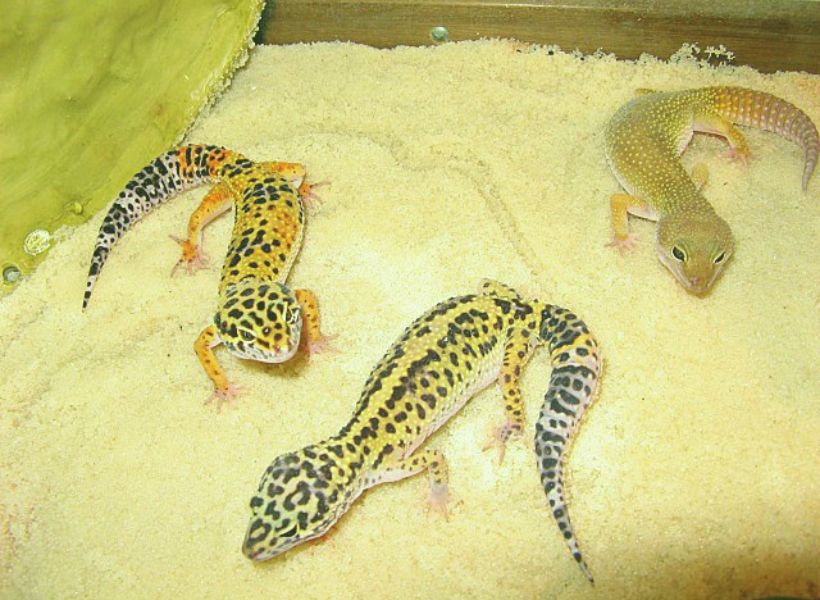
Understanding Leopard Gecko Sexual Dimorphism
Genetic factors significantly influence the sex of your leopard gecko. Also, incubation temperature during breeding can impact how adult males and females develop.
Understanding these aspects is crucial when caring for leopard geckos. Environmental cues, such as temperature and email patterns in breeding months like June or January, can affect the sex of your leopard gecko. Observing these details can help you provide proper care in your leopard gecko tank.
Genetic Sex Determination
The gender of your leopard gecko is determined by the sex chromosomes inherited from their parents during fertilization.
Adult males may show bulges on either side of the vent, while adult females lack these bulges. These genetic factors can help you determine the sex of your Leo without invasive methods like probing or ultrasound.
Common Leopard Geckos live in different places and can adapt well. You can figure out if they are boys or girls by looking at their stomachs.
Boys have bumps on their belly, but girls don’t. This helps you know their gender without needing to do anything complicated like using tools or machines.
How Temperature Affects Gender During Incubation
During incubation, the temperature of leopard gecko eggs can impact the gender of the hatchlings.
Higher temperatures may lead to more female hatchlings, while lower temperatures may result in more males.
This influence on the sex of your geckos is significant for breeders and adult males. Understanding this process is crucial for successful breeding initiatives.
The Role Of Environmental Factors In Sex Determination
Environmental cues, such as incubation temperature, significantly influence leopard gecko gender. Pheromones and other factors also play a crucial role in sex determination.
Environmental influences are vital for accurately determining the sex of your Leo. Paying attention to the temperature, particularly during the first-month mark of incubation, can help you anticipate the sex of your leopard gecko.
The Importance Of Knowing The Gender Of Your Leopard Gecko
Figure out the sex of your leopard gecko is crucial for their care and breeding. It can prevent health issues and ensure the best possible care for your pet.
Knowing the adult males’ characteristics, such as the presence of pores on either side of the vent, can help identify the gender.
This knowledge is essential for creating a suitable leopard gecko tank environment to meet their specific needs.
Leopard Gecko Breeding Indicators
During the breeding season, female leopard geckos develop bulges on the front of the vent, while males exhibit hemipenal bulges near the base of the tail.
Pheromones are used to entice females, and breeding can lead to a male’s lumps, signaling sexual development.
Breeding for morph development is common. Understanding these indicators helps in successful breeding.
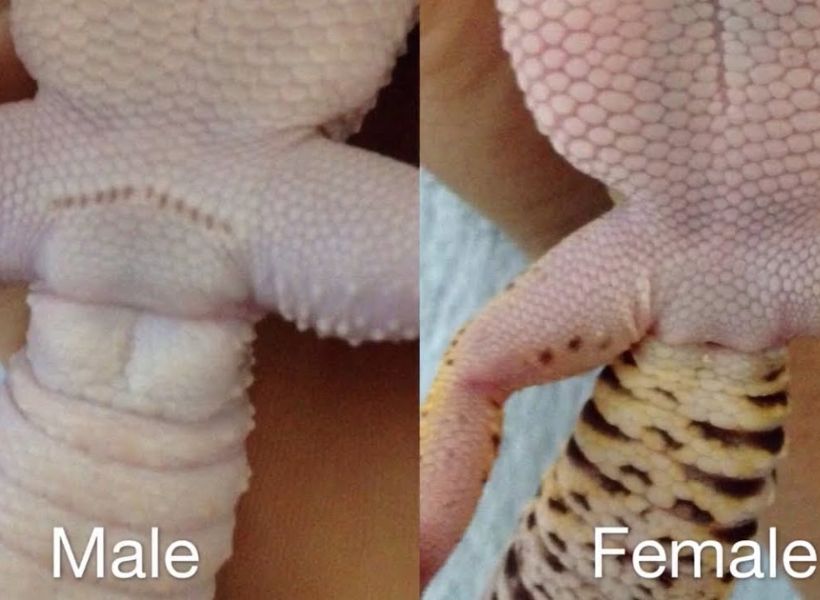
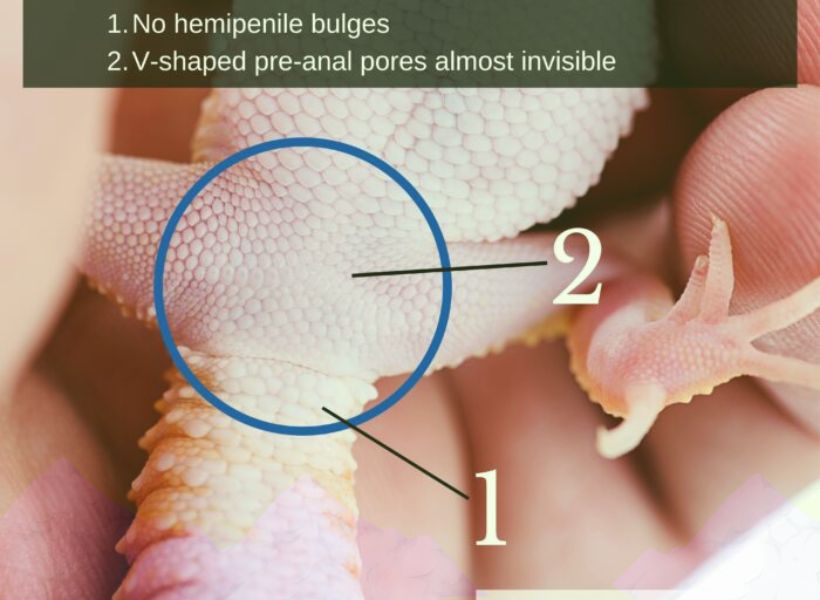
Sex Identification In Leopard Geckos
Determining the sex of your leopard gecko is essential for its care. Adult males usually have larger heads than females and develop femoral pores along the side of the vent.
Besides, female geckos typically exhibit smaller, tan dots on the underside of their legs. Examining the underside is crucial to sex identification, but it can be challenging. Proper care plays a significant role in determining the gender of your Leo.
Gender Differences In Leopard Geckos
Male and female leopard geckos exhibit distinct characteristics. Males typically have visible hemipenal bulges and larger preanal pores, while females may display a lack of these features. Observing these gender differences is essential for proper care and breeding considerations.
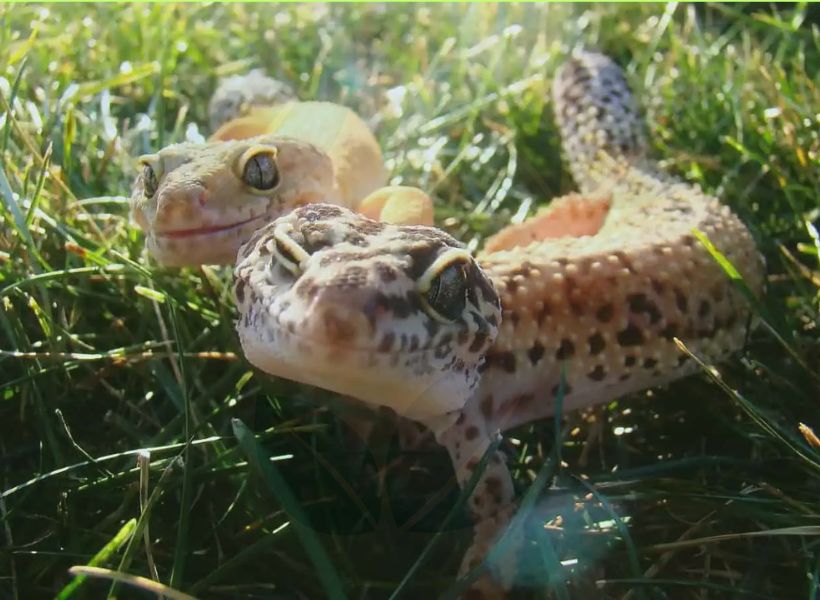
Physical Characteristics That Indicate Male Or Female: Physical Differences
Physical characteristics can help determine the sex of your leopard gecko. Adult males have femoral pores and a V-shaped row of markings below the vent, while females lack femoral pores and have a noticeable buildup of waxy substance.
Besides, male geckos typically have a V-shaped row of lumps or bulges below the vent, while females have a more obvious way of sex identification. The vent size can also indicate the gender of your gecko.
Male Leopard Geckos: Characteristics And Care Tips: Male Gecko
Male leopard geckos often display territorial aggression and have pre-anal pores along with a distinctive bulge at the base of the tail. Hypo Tangerine Female Leopard Geckos, similar to their male counterparts, require attentive care due to their susceptibility to health issues.
Their gender can be identified by the presence of hemipenes located under the vent. Due to their susceptibility to health issues, proper care is crucial. Also, male geckos release pheromones to attract female geckos during the breeding season.
Female Leopard Geckos: Characteristics And Care Tips: Female Gecko
Female leopard geckos exhibit unique behaviors and care needs. They can lay eggs without a male, requiring a larger enclosure for breeding.
Their nurturing nature sets them apart from males. Proper diet is crucial for reproductive health and egg development.
Behaviors such as digging and nesting are common before egg-laying, making it essential to understand the specific needs of female geckos.
Factors Affecting Gecko Gender
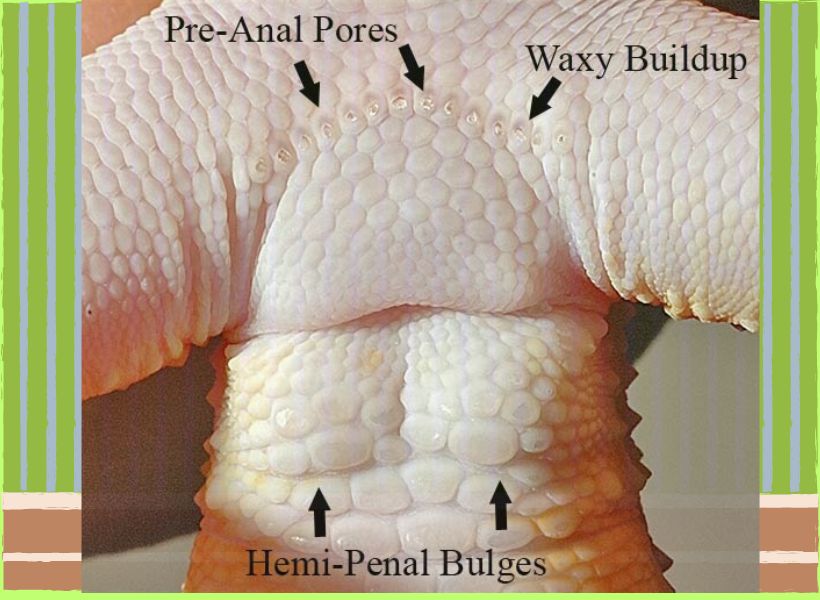
The sex of your leopard gecko is determined by genetic factors inherited from the parents and the incubation temperature of the eggs.
Environmental factors also play a significant role in gender development. Proper animal husbandry is essential for maintaining health.
Adult males have distinct characteristics such as pre-anal pores and hemipenal bulges at the base of the tail. Environmental factors include the temperature and humidity of the leopard gecko tank.
Genetic Factors
Understanding the sex of your leopard gecko is crucial, as adult males and females have distinct care requirements.
Genetic factors determine gender, with sex chromosomes inherited from the parents playing a significant role.
Breeding leopard geckos necessitates knowledge of these genetic influences, given the complex nature of gender differences. Breeders must understand genetics to produce desired leopard gecko morphs.
Incubation Temperature And Its Impact On Gender Determination: Incubate
The temperature at which leopard gecko eggs are incubated can significantly impact the sex of the hatchling.
Proper care in maintaining an appropriate weight, along with the consideration of incubation temperature, becomes essential for ensuring a well-balanced environment.
Behavioral differences between male and female geckos can also be influenced by the incubation temperature.
Consequently, the gender of your leopard gecko can be determined by the incubation temperature of the eggs.
Generally, female leopard geckos are more likely to hatch from eggs incubated at lower temperatures, highlighting the direct effect of incubation temperature on hatchling sex.
The weight of leopard geckos is another crucial factor to consider, as it can affect their overall health and reproductive capabilities
Other Environmental Factors Influencing Gender
During incubation, the photoperiod can impact reptile gender development. Fluctuations in temperature and moisture levels also play a role in determining gender.
It’s essential to consider environmental conditions when breeding leopard geckos, as these factors are critical in sexual development and influencing the sex of your gecko.
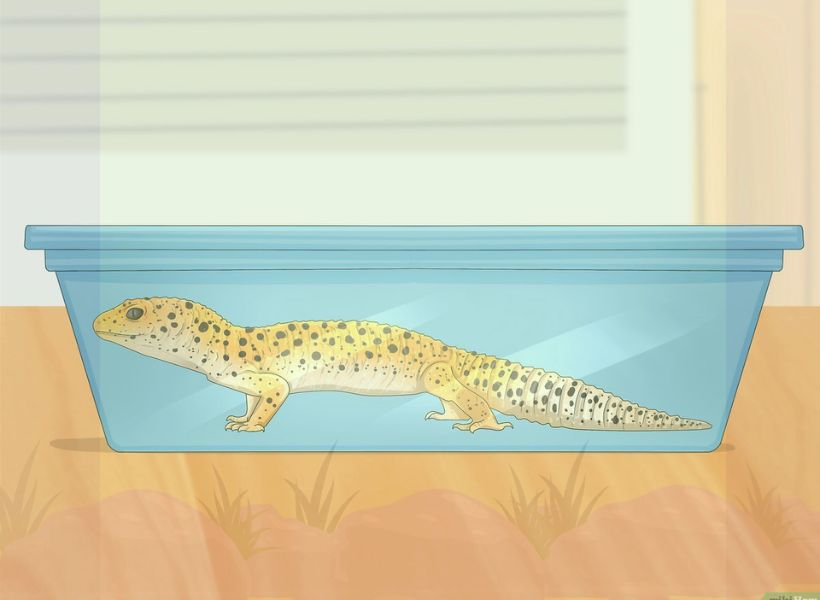
Breeding Considerations Based On Gecko Gender
Breeding your leopard geckos? Essential to know their gender, especially during breeding season.
In the wild, breeding considerations for leopard geckos are influenced by environmental factors, with the changing seasons playing a crucial role in their reproductive behaviors and cycles.
Adult males have visible bulges on the sides of their vents, while females lack these. Gender-based care differs, especially during breeding.
To ensure successful breeding, accurately identify their sex and adjust care accordingly. Breeding season, typically around June or January, is the critical time to confirm their gender.
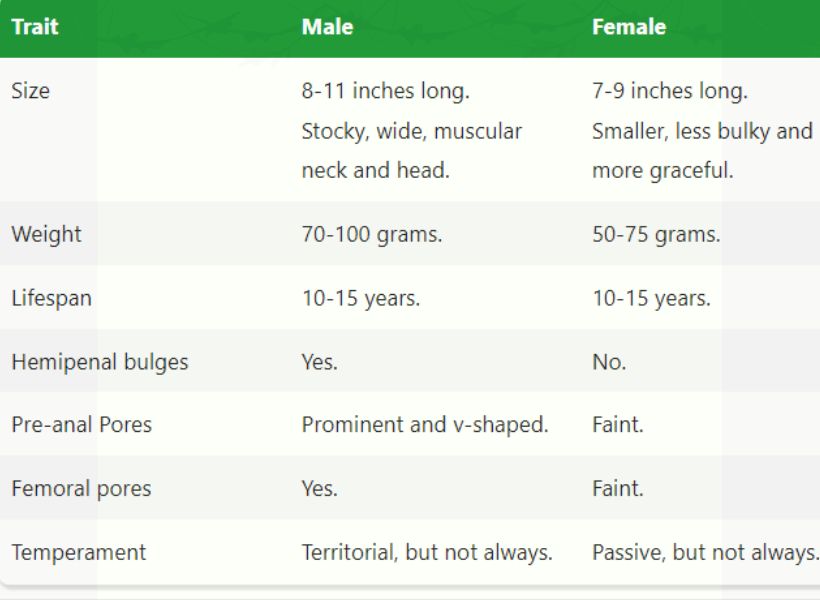
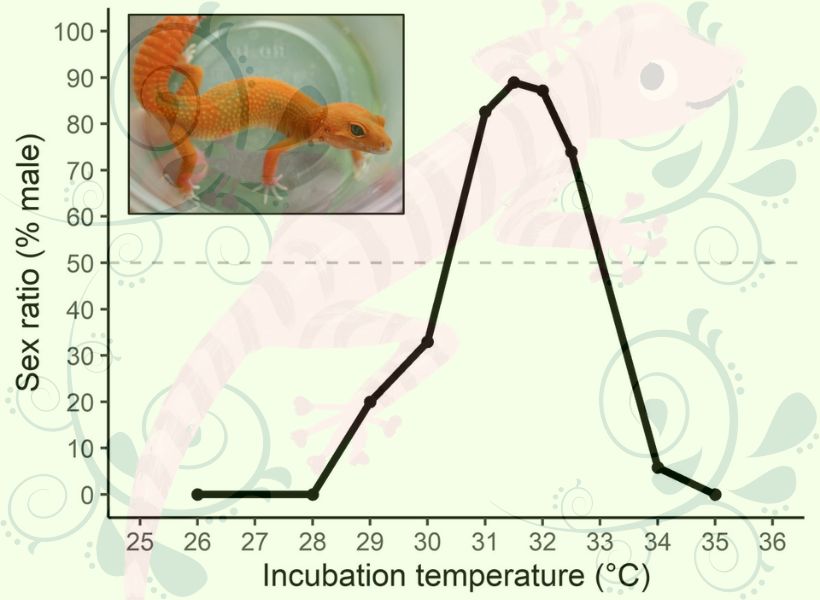
What To Do If You’re Unsure About The Gender Of Your Leopard Gecko
If you’re unsure about the sex of your leopard gecko, examine the underside for hemipenal bulges and the presence of femoral pores in adult males.
Look for a waxy substance at the base of the tail and tan dots on the back legs, commonly found in males. If uncertain, seek assistance from a reptile care veterinarian to ensure accurate identification.
Other Methods For Determining Leo Gender (E.G., Probing, Ultrasound)
Consider enlisting the expertise of a seasoned breeder to ascertain the sex of your leopard gecko.
Delve into the potential use of pheromones to prompt sexual development in adult males. Investigate the viability of ultrasound for determining the sex of your Leo.
Assess the option of probing as a method for gender identification. Take into account the impact of temperature on the sexual development of leopard geckos.

Common Misconceptions About Determining Gecko Gender
Debunking the myth of using tail length as a reliable gender indicator in leopard geckos, it’s essential to understand that this method is not foolproof.
Similarly, the size of the head or the presence of lumps and markings does not determine the sex of your gecko.
Furthermore, frequent handling does not affect its gender, and physical differences are not the most obvious way to determine a leopard gecko’s sex.
Tips For Successfully Identifying The Gender Of Your Leopard Gecko
Successfully identifying the sex of your leopard gecko is essential for their care and wellness. Adult males typically have visible femoral pores on either side of the vent, while females don’t.
To accurately determine the sex of your Leo, it’s crucial to observe the underside for sex-specific characteristics and assess the distance between their vents. This can generally be done when your leopard gecko reaches the six to seven-month mark.
Seeking Professional Assistance For Accurate Gender Identification
When determining the sex of your leopard gecko, seeking professional assistance is crucial. Consulting a veterinarian specializing in leopard gecko care is recommended, as they can accurately identify adult males and females.
Reptile breeders and enthusiasts experienced in gender identification can also provide valuable insights.
Reaching out to lizard experts or leopard gecko breeders for reliable advice on sexing your gecko is essential for accurate gender identification.
FAQ About Leopard Gecko Gender
How Do You Tell If A Leopard Gecko Is A Boy Or A Girl?
To determine the gender of a leopard gecko, observe their undersides. Male leopard geckos have hemipenal bulges and more pronounced pores on their hind legs that secrete waxy substances. Another method is “probing,” which involves inserting a small metal rod into the cloaca for confirmation.
Is A Female Or Male Leopard Gecko Better?
When it comes to leopard geckos, there is no clear “better” option between male and female. Males are generally smaller and more active, while females are larger and more docile. Also, female geckos can lay eggs without a male present. Ultimately, the choice depends on the owner’s preferences and needs.
How Can You Tell If A Day Gecko Is Male Or Female?
To determine the gender of a day gecko, look for certain physical characteristics. Male day geckos have a noticeable bulge beneath their tail at the base, as well as visible hemipenal bulges on either side of their vent. Females are typically smaller in size. If you’re unsure, consult a veterinarian for a DNA test.
How Do You Tell If A Lizard Is A Boy Or Girl?
To determine the gender of a lizard, observe for hemipenal bulges near the base of the tail in males. Females have two visible pores on their vents instead. Size differences and head width can also provide clues, with males typically being larger. In some cases, DNA testing or veterinary probing may be necessary for accurate gender identification.
Why Is It Important To Know The Sex Of My Leopard Gecko?
Knowing the sex of your leopard gecko is crucial if you plan to house them with other geckos, breed them, or if you want to understand their specific care needs as males and females have different requirements.
How Do I Tell If My Gecko Is A Male Or A Female?
You can tell the difference between a male and female gecko by observing the size and prominence of the femoral pores and the presence of hemipenal bulges on the underside of your gecko.
Final Thought 💭
Determining the gender of your Leopard gecko can be an exciting and important aspect of owning these fascinating reptiles.
When uncertain, seeking professional assistance is the best course of action to accurately determine the sex of your Leo.
Proper sexing is crucial to prevent potential health issues and ensure successful breeding.
Professional guidance often provides the most reliable solution to unravel the mystery of leopard gecko gender.



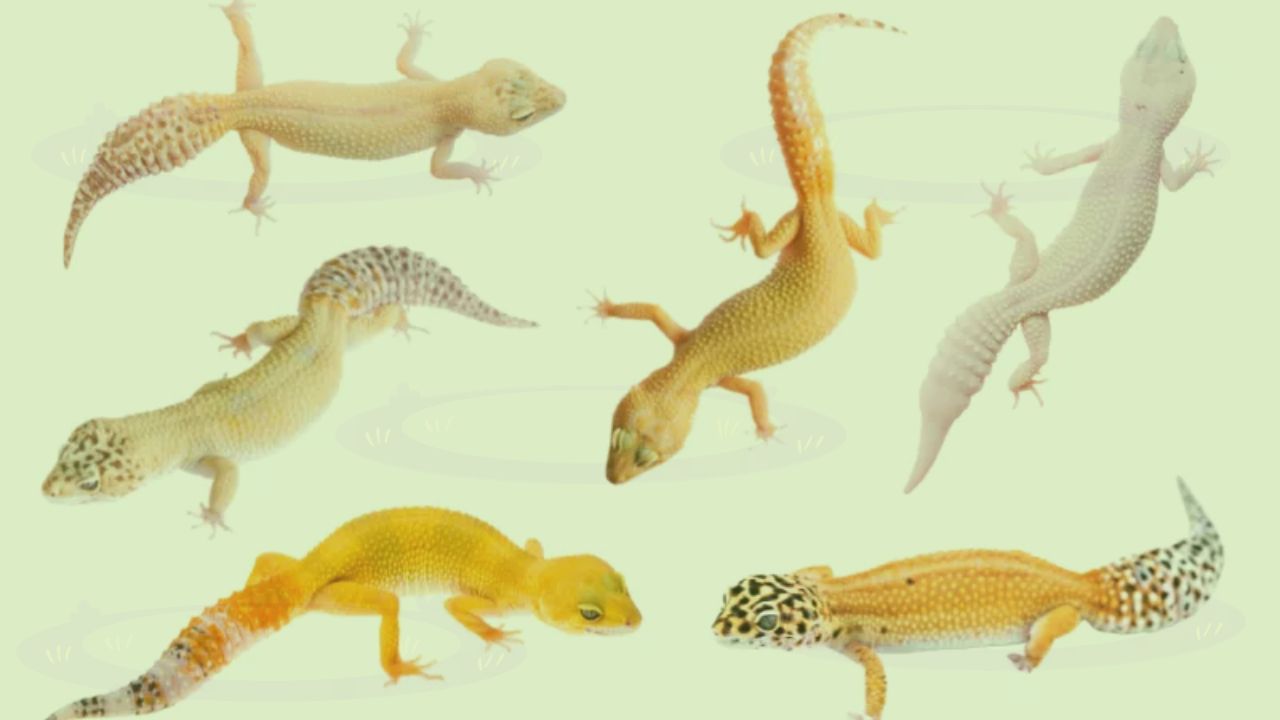
Leave a Reply